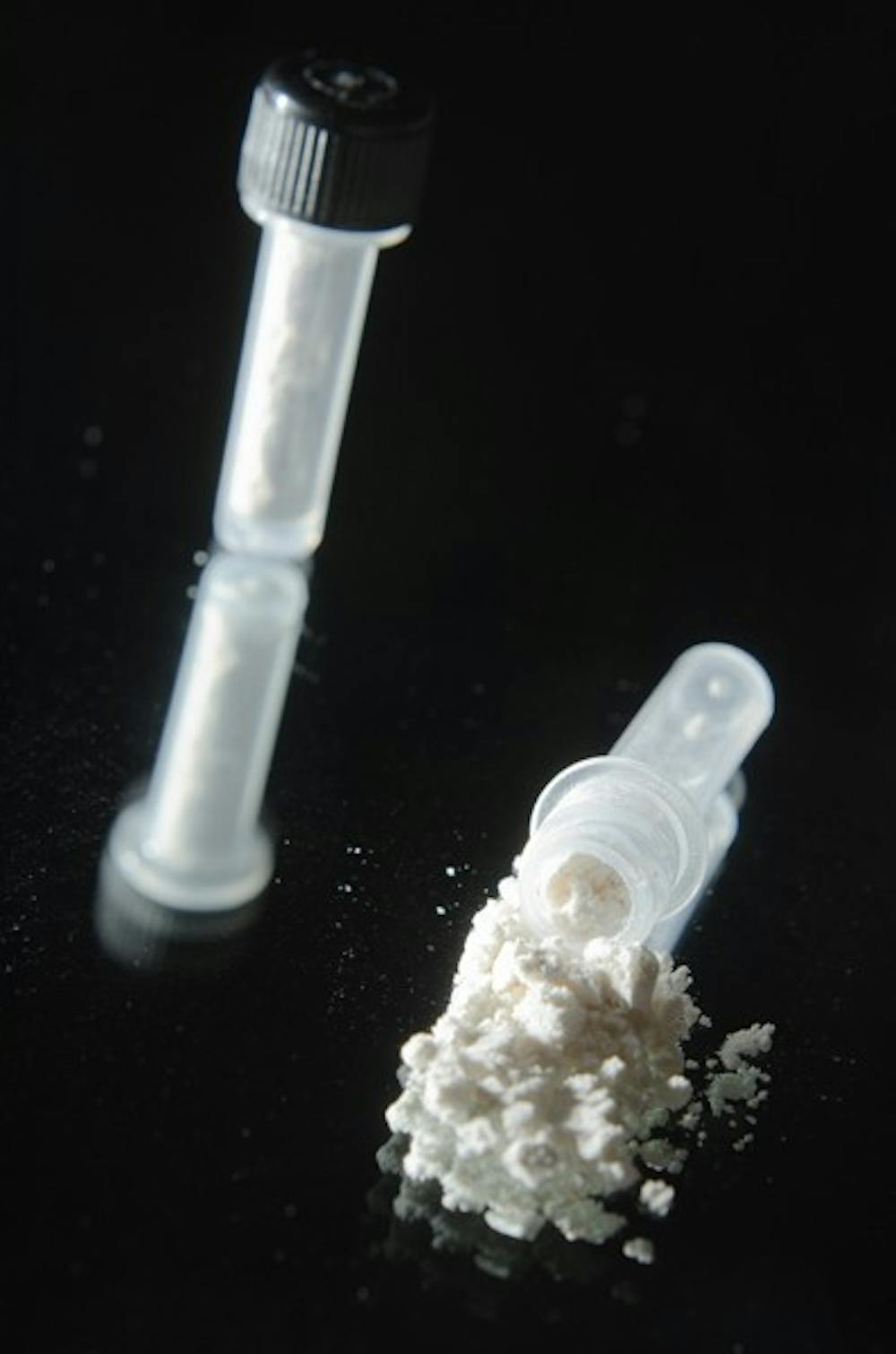An emergency ban issued by the Drug Enforcement Administration on Sept. 7 for the ingredients used to make the designer drug “bath salts” will take effect mid-October.
According to a DEA press release, the ban will prohibit the sale and use of the main components of bath salts: mephedrone, methylenedioxpyrovalerone and methylone.
The salts mimic the effects of drugs like methamphetamine or cocaine, according to the release.
Although the packaging warns consumers that the contents are not meant for consumption, the white powdery drug has been snorted, injected and smoked by users.
The drug has garnered increasing attention because of its extreme side effects that include paranoia and violent behavior.
While still legal in Arizona, 33 other states have banned the sale and use of bath salts, DEA spokeswoman Ramona Sanchez said.
Sanchez expects the ban to take place on or around Oct. 11, depending on when the DEA publishes a final order in the Federal Register.
The ban will last a year, with the possibility of a six-month extension while the DEA and the U.S. Department of Health and Human Services determine whether the chemicals should be permanently controlled.
Four of the six smoke shops near the Tempe campus do not carry bath salts. The remaining stores were not offering discounts on the product to clear out inventory. No employees were willing to go on record regarding the ban.
Some websites are offering reduced prices on bath salts or offering free shipping.
Raving Dragon Bath Salts, a website that sells the drug wholesale, had an advertisement on its website stating “Less than 30 days until the federal bath salt ban, get your piece of history NOW!”
“The Internet is now a flourishing market place for potential users,” Sanchez said, adding often the product is marketed to minors under the misconception that the drug is harmless because it is legal.
Jim Kreitler, director of intake at the Calvary Addiction Recovery Center in Phoenix, has seen the effects the drug has on patients.
“They are going a hundred miles an hour, they haven’t slept, they aren’t eating and their heart rate is high,” Kreitler said. “Until all that is stabilized they are in a risky medical situation.”
After the announcement of the federal ban, Kreitler said they have seen a considerable uptick in patients admitted because of bath salts. He worries that even after the ban goes into effect, they will still be sold illegally.
Kreitler said the Calvary Center accommodates 50 patients and 10 percent of those patients are there because of bath salts.
Stephanie Siete, director of community education for Community Bridges, said there has definitely been an increase in users since the announcement of the ban.
Community Bridges is a nonprofit organization that provides treatment, education and substance abuse prevention throughout Arizona.
Poison control centers fielded more than 3,700 calls regarding bath salts and related drugs from January to June of this year, according to the American Association of Poison Control Centers. In all of 2010 they responded to 303 calls.
“What is so concerning about this is how many people are in a long-term paranoid state,” Siete said.
The paranoia can last two to three days and lead to suicidal tendencies because patients are scared, out of their minds and often hallucinate, she said.
Stabilizing a patient high on “bath salts” is similar to treating someone on methamphetamines. However, Siete said that rather than one-time treatments of sedatives, clinicians have to administer repeated treatments because of the long lasting side effects from the drug.
The bigger issue is the ongoing evolution of designer drugs, Siete said.
“The barrier with all of these synthetic drugs is that it is going to be easy to duplicate,” she said. “People are always going to come up with a new formula for it.”
Reach the reporter at lghuffer@asu.edu
Click here to subscribe to the daily State Press newsletter.





